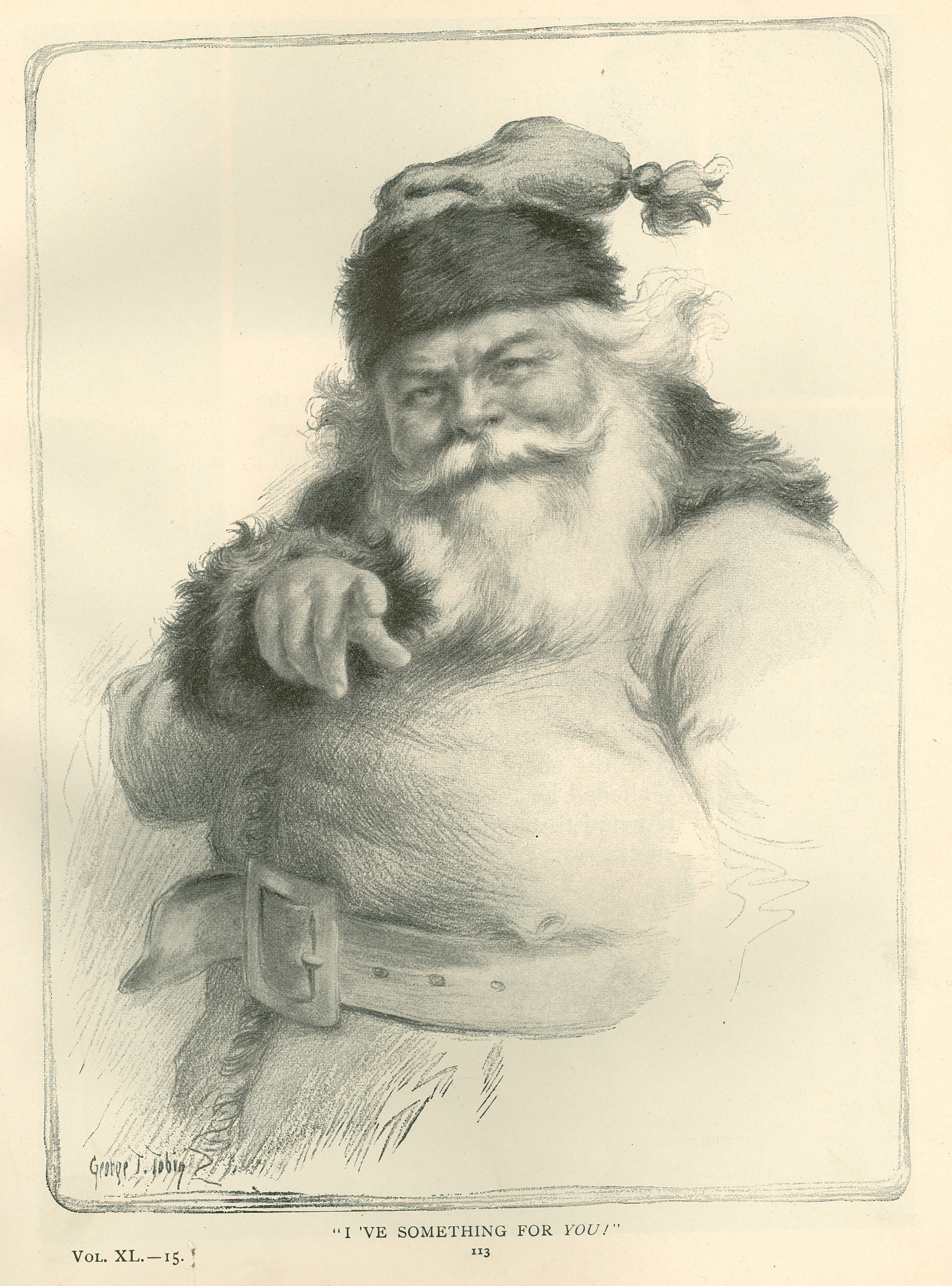St. Nicholas: An Illustrated Magazine for Young Folks
What did you wish for this Christmas? If you were a girl or boy living in the late nineteenth to early twentieth centuries, you might have wished for a subscription to the popular children’s magazine, St. Nicholas: An Illustrated Magazine For Young Folks. Due to the foresight of the Carnegie Library Board and the City of Little Falls, the Morrison County Historical Society (MCHS) is now the proud owner of eighteen bound volumes of this delightful magazine. Originally part of the holdings at the Little Falls Carnegie Library, the issues included in the donation date from May 1905, the year the Carnegie Library opened to the public, to April 1914. The magazine presents an excellent portrait of American cultural history and is a prize addition to the museum’s growing collection of children’s literature.

Later issues of the magazine featured cover portraits of
Santa Claus in the Christmas issues.
Named for the patron saint of children, the St. Nicholas magazine was designed to be a playground that would provide good, clean fun. The magazine sought to inspire children to cultivate their imaginations, to stimulate their ambitions and to prepare for the sometimes harsh realities of life. From the time of its first publication in November 1873, the magazine was considered to be of high quality. This was due in part to the editorship of Mary Mapes Dodge, author of the best-selling novel, Hans Brinker, and to the prosperity of the Scribner’s publishing company. The strong financial backing provided by the company enabled Dodge to convince a bevy of talented writers and artists to contribute to the magazine. Mark Twain, Jack London, Louisa May Alcott, Laura Ingalls Wilder and Rudyard Kipling are a few of the now-famous literary figures who submitted works. Among the many talented artists were Norman Rockwell, Arthur Rackham, Maxfield Parrish and Frederic Remington.
The intended audience for the St. Nicholas magazine was children ages five to eighteen. A typical issue included both fiction and nonfiction as well as music, poetry, plays, artwork and book reviews. Among the various columns were “Jack-in-the-Pulpit”, “Nature and Science for Young Folks”, “Letters to St. Nicholas”, “For Very Little Folks” and “The Riddle Box”, which was a collection of mind-bending brain teasers. In order to learn the correct answers to the riddles, readers had to submit their own solutions to the publisher.
Besides providing generations of children with excellent reading material, the magazine also furnished an outlet for their creativity through the St. Nicholas League. Beginning in 1899, readers were invited to submit original creative works to the League for judging. The best contributions were awarded badges or cash prizes and were printed in future issues of the magazine. Among the now-famous writers who were first published through the St. Nicholas League are F. Scott Fitzgerald, Rachel Carson, William Faulkner and Eudora Welty.
Advertisements in the early issues were found only on a few pages in the back. Though a children’s magazine, many of the ads were directed at adults. In later issues, the advertisements took up much more space and could be found on the first twenty to thirty pages as well as in the back. Devoted readers would send six issues of the magazine to the publisher. For a small fee, the publisher would cut out the advertisements and return the issues bound as a book. The book was typically either a plain buckram library volume or a leather volume with corner embellishments. The latter version is what MCHS received for its collection.
Circulation of the St. Nicholas magazine quickly rose to around seventy thousand. With the encouragement of its early success, the magazine soon doubled in size from forty-eight to ninety-six pages per issue. The quality of the magazine was maintained after Mary Mapes Dodge died in 1905 and William Fayal Clarke, her assistant editor, took charge. After Clarke retired in 1928, the magazine experienced a gradual decline and the last issue was published in November 1941. Some scholars have suggested that the emergence of radio and movies encouraged the magazine’s downfall as reading was no longer considered the favored pastime.
Though relatively inexpensive, the St. Nicholas magazine was generally only purchased by middle-class and well-to-do families. Subscriptions were fortunately affordable enough to be given as gifts and circulating issues were usually available at local libraries. Ironically, the first volume in the Little Falls Carnegie Library collection dates to just three months after the Carnegie Library was opened for loaning books on 7 February 1905.
St. Nicholas: An Illustrated Magazine For Young Folks was published at a time when improvements in American printing technology allowed for the mass production of magazines and books. The most widely circulated and read children’s magazine, St. Nicholas played a significant role in the development and content of children’s periodicals during its nearly seven decades of publication. The focus on education, entertainment and reader involvement helped the magazine to entice readers and maintain their attention while allowing it to establish a lasting reputation as the best children’s magazine ever produced.
~ Ann Marie Johnson, Curator of Collections
This article originally appeared in the Morrison County Historical Society newsletter, Volume 20, Number 4, 2007.
St. Nicholas Magazine Editorial Policy
To give clean, genuine fun to children of all ages.
To give them examples of the finest types of boyhood and girlhood.
To inspire them with an appreciation of fine pictorial art.
To cultivate the imagination in profitable directions.
To foster a love of country, home, nature, truth, beauty, and sincerity.
To prepare boys and girls for life as it is.
To stimulate their ambitions—but along normally progressive lines.
To keep pace with a fast-moving world in all its activities.
To give reading matter which every parent may pass to his children unhesitatingly.
Brownies
See the fun illustrations below? There are more like them in Volume 40, Part I of St. Nicholas magazine. These little characters were drawn by Palmer Cox, who contributed both poems and illustrations to the magazine. His mischievous creatures are called Brownies, for whom Kodak’s Brownie camera was named.





